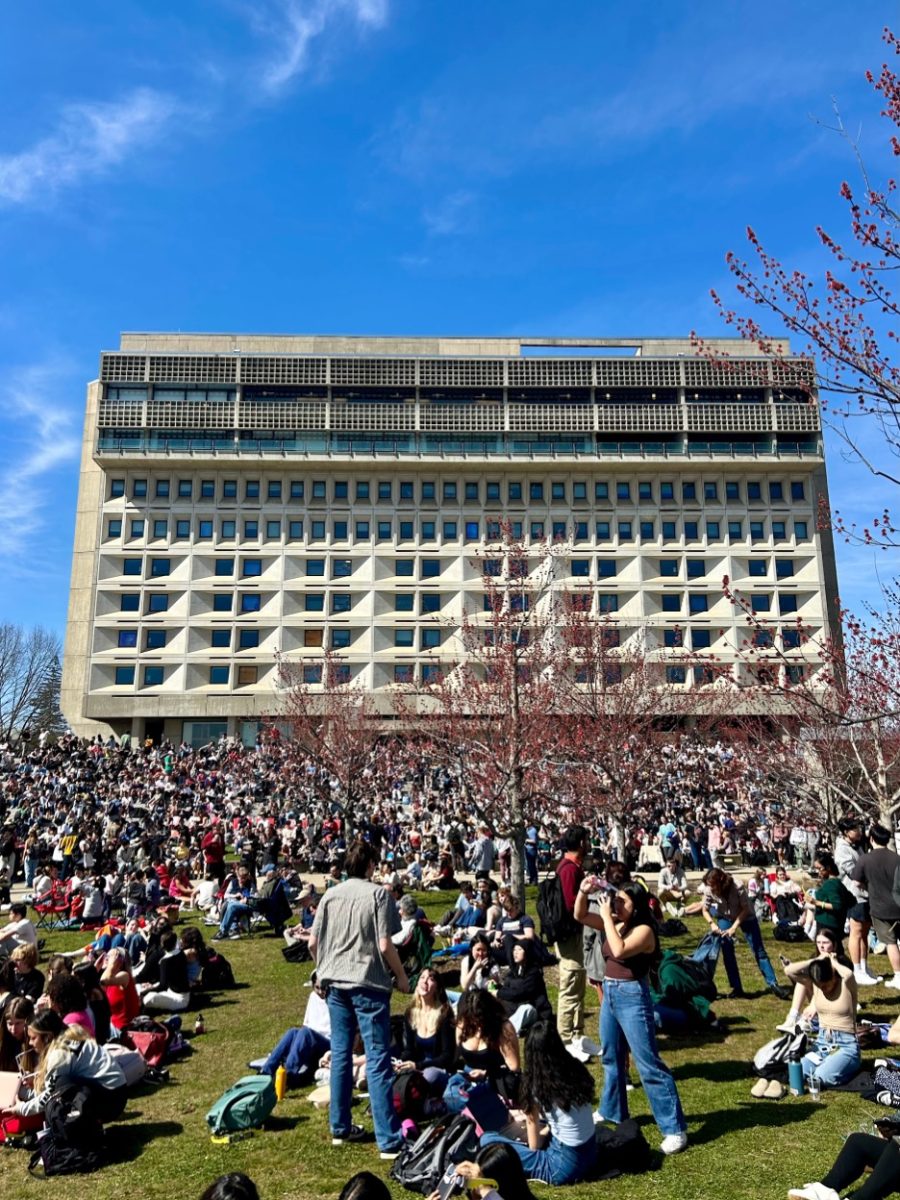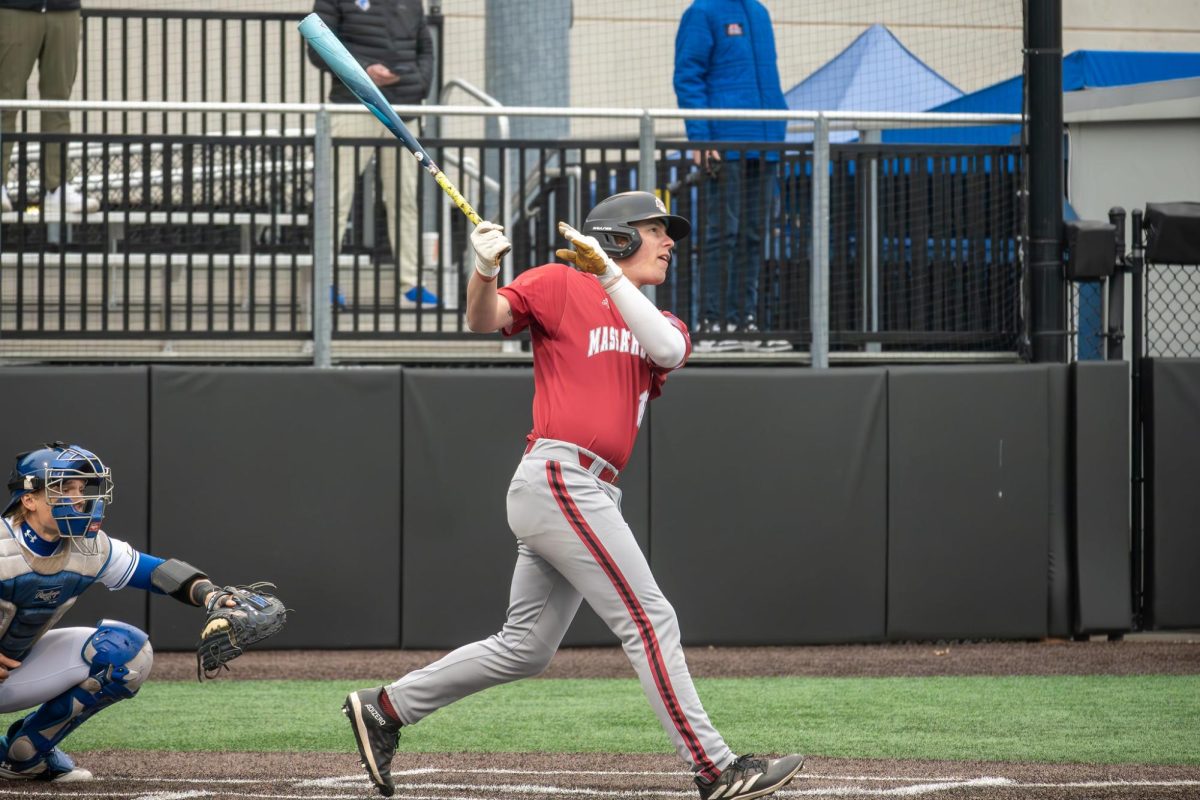
Cadets Zach Schafer and Ian Crittenden stood before the backdrop of the autumn colored valley mountains last Wednesday. The day was a special one. They raised their right hands and listened to the words of Lt. Col. Timothy McGrew carefully, repeating them with precision. They swore allegiance. They took the oath. They were now officially committed to serving in the United States Army.
But their service would have to wait until after graduation.
Schaffer, a freshman chemistry major from Pembroke, wanted to enlist right after high school, but his grandfather, a military veteran, emphasized the importance of an education and suggested the Reserve Officer Training Corps program instead.
“I’ve known all along that I wanted to be a career military man, but now with the help of the corps I’ll enter the service as a 2nd Lt. and I’ll have a degree,” Schaffer said.
Schafer and Crittenden are two of the University of Massachusetts Minuteman Battalion’s 58 cadets of Alpha Company enrolled in the United States Army ROTC program.
ROTC is a college-based program which trains commissioned officers of the U.S. armed forces with a focus on producing knowledgeable and competent leaders ready for service, according to the U.S. Army’s website. The two-credit course offered under the school of military science is open to all students, though after two years in the program the decision to be “contracted” must be made.
Although participation in the ROTC program does not require military service, it is highly encouraged, according to senior Alexander Lindsay, a cadet captain and the ROTC’s media relations official. After two years of participation, a cadet must decide whether or not to enlist. In exchange for a scholarship funded by the U.S. Army, a cadet swears to fill an obligation of eight years in the service either fully in the reserves or half in active duty.
“I’ll be truthful with you, the monetary aspect is an incentive, but the commitment goes far beyond the scholarships,” said Lindsay, who is also an active member of the National Guard.
“The bigger goal is to serve your country and give back to the community that’s supported me throughout my life. As an officer, you’ll be leading the sons and daughters of America. The program has taught me so much about myself and the potentials I have of being a leader.”
Lindsay emphasized the importance of learning to lead by learning to follow. As each cadet progresses through the program from a new MS1 freshman to a more advanced MS4 senior, they assume more responsibility. Based on performance, members are able to progress through the chain of command.
Cadets participate in physical training, or PT, three times a week, attend weekly courses and employ training with hands-on activities during a weekly lab. In between junior and senior year, every cadet must complete a Leadership Development Assessment Course at Fort Lewis in Washington. The 32-day course challenges and assesses each individual’s leadership capabilities and is a requirement for all cadets in the nation, according to the ROTC website.
Cadets are also active in the campus community. They distributed water at this year’s Homecoming tailgate and will participate in ceremonies honoring military service for Veteran’s Day this Tuesday.
As seniors, cadets have the opportunity to lead and organize lesson plans for one of the labs during the semester. Here, according to Lindsay, is where seniors put their leadership skills to use by organizing and conducting a field simulation.
“Every senior is given an assignment that we are to cover,” Lindsay said. “What I enjoy is the personal creativity allowed by coming up with a lesson plan to involve the younger cadets.”
Lindsay led the Alpha Company in a military communications simulation on Wednesday that included hands-on experience operating authentic radios used during combat. He presented a power point on the logistics of radios and military communication before leading a simulation at Boyden Field, where cadets transmitted messages using the phonetic alphabet.
“I love being a teacher to the younger members, to use the motivation and knowledge that the program gives me and pass it on,” Lindsay said. “The important thing to remember though is that we are students first. Every cadet is pursuing a degree separate from the program. The Army wants educated and intelligent officers to lead once we graduate.”
Lindsay, a journalism major, said the knowledge he’s gained from his ROTC experience carries over into improving his work within his major and his position as an editor at the student-run online publication, the Amherst Wire.
“My experience at ROTC has given me the confidence, persistence and organization skills to carry over into whatever career I pursue after my service is complete. It teaches you to respect hard work and motivation,” Lindsay said.
The battalion is one of the oldest ROTC programs in the nation. Its history spans over a century of adaptation and change, according to its website. From its inception as the Massachusetts Agricultural College in 1862, there’s been a presence of military training around campus.
An infantry battalion led by student officers was active on campus in 1869 and later formalized into the corps in 1918, which would eventually be absorbed into the ROTC program following World War I. A total of 1,304 male students from the agricultural college served in World War I and a table in Memorial Hall commemorates the 51 members who lost their lives during the war.
Following its formal institutionalization after World War I, the program has gone through many changes. Between World War I and World War II, the ROTC program transitioned from a cavalry unit into an armor ROTC program.
The current ROTC building housed five operational tanks during World War II. Members were given hands-on training experience with armory and participated in live ammunition firing simulations.
Following World War II, the program was adopted under the branch of military science and distinguished from the AIR Force ROTC program operational on campus today.
And according to Lindsay, ROTC has been employing efforts to include courses that reflect cultural trends surrounding the military. Cadets are educated on gender equality and are instructed to identify and prevent situations of sexual assault.
The necessity to balance ROTC obligations, academic requirements and a social life can be difficult, but it does not detract from the experience of being a college student, according to Lindsay.
“Sure, there are some sacrifices that have to be made, though the Amy teaches us to be versatile,” Lindsay said. “Situations change quickly in the field and you need to be willing to adapt. But it’s what I love and my friends are very understanding of that. I’ve met some of my closest friends at UMass through the program.”
Senior and fellow cadet captain Ryan Hunt said he enjoys his commitment, but it doesn’t detract from his social life.
“My experience has been very beneficial,” he said. “But it’s nice after finishing PT to be able to hang out with my friends at Holyoke and get away from the intense ‘Hoo-Rah’ mentality.”
After dismissing the company from its communications lab at Boyden Field, Lindsay reflected on his experience within ROTC.
“Man I love this,” he said. “It’s not for everybody, but I know l love it and it’s the right place for me.”
Brendan Deady can be reached at [email protected].

















